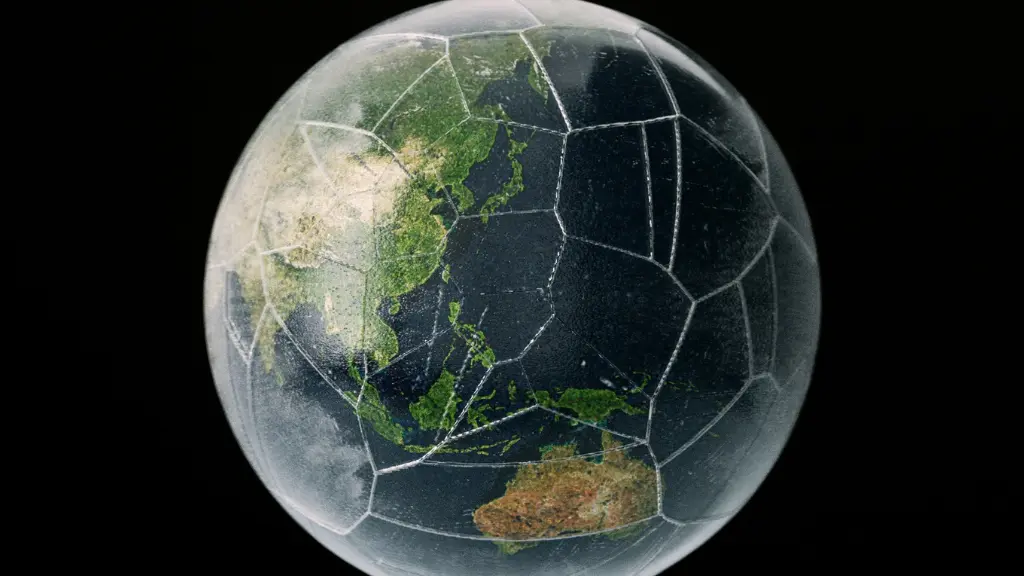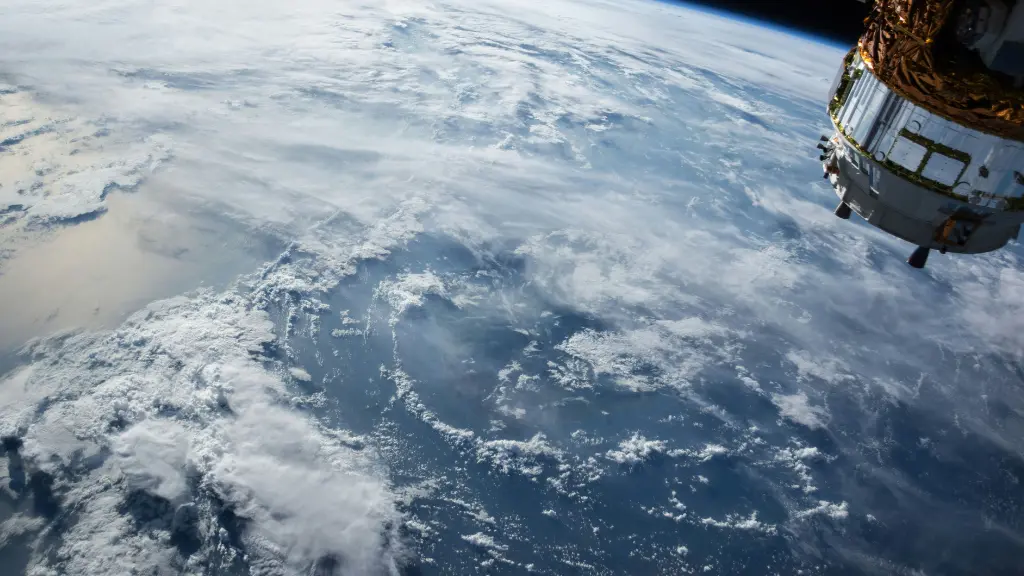

Dünya'nın çekirdeği gezegenimizin büyüleyici ve gizemli bir parçasıdır. Dünyanın tam merkezi olarak dünya çekirdeği, gezegenin genel yapısı ve davranışında önemli bir rol oynar. Çekirdek iki ayrı parçadan oluşur: iç çekirdek ve dış çekirdek.
İç çekirdek, yaklaşık 1.200 kilometre çapında, demir ve nikelden oluşan katı bir küredir. Yaklaşık 2.300 kilometre kalınlığında erimiş metalden oluşan dış çekirdekle çevrilidir. Bu iki katman birlikte Dünya'nın toplam hacminin yaklaşık 15%'sini oluşturur. Çekirdek ayrıca inanılmaz derecede sıcaktır ve merkezde sıcaklık 6.000 santigrat dereceye kadar ulaşır.
Bilim insanları Dünya'nın çekirdeğini onlarca yıldır inceliyorlar, ancak hâlâ bilinmeyen çok şey var. Ancak, teknolojideki son gelişmeler araştırmacıların bu gizemli bölgeyi daha iyi anlamalarına olanak sağladı. Bu makalede Dünya'nın çekirdeğini, bileşimi, davranışı ve gezegenimizi şekillendirmede oynadığı rol dahil olmak üzere daha ayrıntılı olarak inceleyeceğim.

Dünya'nın çekirdeği, manto ve kabuğun altında bulunan gezegenimizin merkezi kısmıdır. İki katmana ayrılır: katı iç çekirdek ve sıvı dış çekirdek. Dünya'nın çekirdeğinin bileşimi, gezegenimizin oluşumunu ve evrimini anlamamıza yardımcı olduğu için bilim insanları için büyük ilgi gören bir konudur.
Dünya çekirdeğinin kimyasal bileşiminin öncelikle demir (Fe) ve nikel (Ni) olduğuna inanılmaktadır. Bu elementler çekirdeğin kütlesinin 80%'sinden fazlasını oluştururken, kükürt (S), oksijen (O) ve silisyum (Si) gibi diğer elementlerin daha az miktarları da vardır. Çekirdeğin kesin bileşimini belirlemek zordur, çünkü onu doğrudan gözlemlemek imkansızdır. Ancak bilim insanları sismik veriler ve deneylere dayanarak çekirdeğin bileşimi hakkında çıkarımlarda bulunabilmişlerdir.
Dünyanın katı iç çekirdeğinin çoğunlukla demirden, daha az miktarda nikel ve diğer elementlerden oluştuğuna inanılıyor. Yaklaşık 1.220 kilometrelik bir yarıçapa ve yaklaşık 5.000 santigrat derece sıcaklığa sahip olduğu tahmin edilmektedir. İç çekirdek, yüksek sıcaklığına rağmen maruz kaldığı yoğun basınç nedeniyle katı kalır.
Dünya çekirdeğinin sıvı dış çekirdeği de esas olarak demir ve nikelden oluşur, ancak kükürt ve oksijen gibi daha hafif elementler de içerir. Yaklaşık 2.300 kilometre kalınlığında ve yaklaşık 4.000 santigrat derece sıcaklıkta olduğu tahmin edilmektedir. Bizi tehlikeli güneş radyasyonundan koruyan Dünya'nın manyetik alanı dış çekirdek tarafından üretilir.
Sonuç olarak, bileşimi dünya çekirdeği esas olarak demir ve nikelden oluşur, daha az miktarda diğer elementlerle birlikte. Katı iç çekirdek ve sıvı dış çekirdek, Dünya'nın jeolojisinde ve Dünya manyetik çekirdek alanında önemli roller oynar. Dünya'nın çekirdeğinin bileşimini ve davranışını tam olarak anlamak için daha fazla araştırmaya ihtiyaç vardır.

Bir jeofizikçi olarak yer çekirdeğinin dinamikleri beni her zaman büyülemiştir. Çekirdek, iç çekirdek ve dış çekirdek olmak üzere iki ayrı katmandan oluşan karmaşık bir sistemdir. Bu bölümde çekirdek içindeki hareketleri ve ısı transferini inceleyeceğim.
Dünya'nın çekirdeği sürekli hareket halindedir. Bizi tehlikeli güneş radyasyonundan koruyan çekirdek dünya manyetik alanı dış çekirdek tarafından üretilir. Dış çekirdeğin hareketi iç çekirdekten üretilen ısı ve dış çekirdeğin tepesindeki soğuma tarafından yönlendirilir. Bu harekete konveksiyon denir.
Dünya'nın dönüşü de çekirdeğin hareketinde önemli bir rol oynar. Coriolis etkisi, konveksiyon akımlarının Kuzey Yarımküre'de saat yönünde, Güney Yarımküre'de ise saat yönünün tersine dönmesine neden olur. Bu dönüş, Dünya'nın manyetik alanını oluşturan bir dinamo etkisi yaratır.
Öte yandan iç çekirdek dış çekirdekten bağımsız olarak döner. İç çekirdeğin dönüşü Dünya yüzeyinin dönüşünden biraz daha hızlıdır ve her 24 saatte bir tam bir dönüş tamamlar. Bu dönüş, çekirdeğin manyetik alanının korunmasından sorumlu olduğuna inanılan az miktarda enerji üretir.
Çekirdek yer bilimi aşırı sıcaktır ve sıcaklıklar 6.000 santigrat dereceye kadar yükselir. Isı, radyoaktif izotopların bozunmasından ve Dünya'nın oluşumundan kalan artık ısıdan üretilir. Isı daha sonra iletim yoluyla iç çekirdekten dış çekirdeğe aktarılır.
Üstteki dış çekirdeğin soğutulması, konveksiyon akımlarını yönlendiren bir sıcaklık gradyanı yaratır. Sıcak malzeme yükseldikçe soğur ve aşağıya doğru alçalır, böylece sürekli bir ısı transferi döngüsü oluşur.
Sonuç olarak, Dünya'nın çekirdeğinin dinamikleri karmaşık bir hareket ve ısı transferi sistemidir. Çekirdeğin hareketleri konveksiyon ve Dünya'nın dönüşü tarafından yönlendirilirken, ısı radyoaktif izotopların bozunmasından ve Dünya'nın oluşumundan kalan ısıdan üretilir. Çekirdeğin dinamiklerini anlamak, Dünya'nın manyetik alanını ve gezegenimizi şekillendiren süreçleri anlamak için çok önemlidir.

Bir Dünya bilimci olarak, Dünya'nın manyetik alanının incelenmesini büyüleyici buluyorum. Manyetik alan gezegenimizin önemli bir yönüdür ve günlük hayatımızda kritik bir rol oynar. Bu bölümde, Dünya'nın çekirdeğinin manyetik alanı oluşturma ve sürdürmedeki rolünü tartışacağım.
Dünya'nın manyetik alanı, dış çekirdekteki erimiş demirin hareketinden kaynaklanır. Dış çekirdek, katı iç çekirdeği çevreleyen bir sıvı demir tabakasıdır. Erimiş demirin hareketi, elektrik akımları üretir ve bu da manyetik alanı üretir.
Manyetik alan statik değildir, aksine sürekli değişir. Manyetik kutuplar hareket edebilir ve hatta zamanla kutupluluğu tersine çevirebilir. Bu değişimler Dünya'nın çekirdeğinin karmaşık dinamikleri ve manto ve kabukla etkileşimlerinden kaynaklanır.
Jeomanyetik ters çevirmeler, Dünya'nın manyetik alanındaki en dramatik değişimlerdir. Ters çevirme sırasında manyetik alan zayıflar ve manyetik kutuplar yer değiştirir. Son ters çevirme yaklaşık 780.000 yıl önce gerçekleşti ve bilim insanları hala bu ters çevirmelere neden olan mekanizmaları anlamaya çalışıyorlar.
Teorilerden biri, bu tersine dönmelerin dış çekirdekteki erimiş demir akışındaki değişikliklerden kaynaklandığı yönünde. Akış değiştikçe manyetik alan zayıflar ve sonunda tersine döner. Diğer bir teori ise tersine dönmelerin çekirdek ile manto arasındaki etkileşimlerden kaynaklandığıdır.
Sonuç olarak, Dünya çekirdek manyetik alanı, dış çekirdekteki erimiş demirin hareketiyle üretilen ve sürdürülen karmaşık ve dinamik bir sistemdir. Manyetik alan, pusulaları yönlendirmekten bizi zararlı güneş radyasyonundan korumaya kadar günlük hayatımızda önemli bir rol oynar. Çekirdeğin Dünya'nın manyetizması içindeki rolünü anlamak, Dünya bilimcileri için önemli bir çalışma alanıdır.

Bir Dünya bilimci olarak, Dünya çekirdeğinin incelenmesini büyüleyici buluyorum. Dünya'nın çekirdeği, katı bir iç çekirdek ve sıvı bir dış çekirdekten oluşan gezegenimizin en iç kısmıdır. Çekirdek, Dünya'nın hacminin yaklaşık 15%'sini ve kütlesinin 32%'sini oluşturur. Önemine rağmen, Dünya'nın çekirdeğini incelemek, erişilemez olması nedeniyle zorlu bir görevdir.
Dünya çekirdeğini incelemek için kullanılan birincil yöntemlerden biri sismik dalga analizidir. Sismik dalgalar, Dünya'nın iç kısmından geçen enerji dalgalarıdır ve Dünya çekirdeğinin özellikleri hakkında değerli bilgiler sağlayabilirler. Bilim insanları sismik dalgaların seyahat sürelerini ve genliklerini analiz ederek Dünya çekirdeğinin yoğunluğunu, sıcaklığını ve bileşimini çıkarabilirler.
Dünya çekirdeğini incelemek için kullanılan bir diğer yöntem de hesaplamalı simülasyondur. Bu, Dünya çekirdeğinin farklı koşullar altında davranışını simüle etmek için bilgisayar modelleri kullanmayı içerir. Sıcaklık, basınç ve bileşim gibi parametreleri değiştirerek bilim insanları Dünya çekirdeğinin dinamikleri ve Dünya'nın manyetik alanını nasıl etkilediği hakkında fikir edinebilirler.
Sonuç olarak, Dünya çekirdeğini incelemek, birden fazla yöntem ve tekniğin kullanılmasını gerektiren karmaşık ve zorlu bir görevdir. Sismik dalga analizi ve hesaplamalı simülasyon yoluyla, bilim insanları Dünya'nın çekirdeği ve üzerinde yaşadığımız gezegeni şekillendirmedeki rolü hakkında daha iyi bir anlayış kazanıyorlar.

Dünya çekirdeğini incelemiş biri olarak, çekirdeğin gezegenimizin en büyüleyici ve önemli parçalarından biri olduğunu rahatlıkla söyleyebilirim. Dünyanın tam merkezinde bulunur ve dünya katmanlarındaki iki çekirdekten oluşur: iç çekirdek ve dış çekirdek.
Dünya çekirdeği ile manto arasındaki sınıra çekirdek-manto sınırı denir. Dünya yüzeyinin yaklaşık 2.900 kilometre altında yer alır. Sınır, yoğunlukta keskin bir artış ve içinden geçen sismik dalgaların davranışında bir değişiklik ile belirlenir.
Çekirdek-manto sınırı, jeologlar ve sismologlar için çok önemli bir çalışma alanıdır. Sınırın tektonik plakaların hareketinde ve volkanik aktivitenin oluşumunda önemli bir rol oynadığına inanılmaktadır. Sınırın ayrıca Dünya'nın manyetik alanının oluşumundan sorumlu olduğu düşünülmektedir.
Çekirdek ve kabuk arasındaki etkileşimler de çok önemlidir. Dünya çekirdek ısısı tektonik plakaların hareketini yönlendirir ve bu da Dünya'nın yüzeyini şekillendirir. Çekirdek ayrıca dağların oluşumunda da rol oynar çünkü tektonik plakaların hareketi kabuğun bükülmesine ve katlanmasına neden olabilir.
Ayrıca yer çekirdeği manyetik alanı, Dünya'yı güneş rüzgârının ve kozmik radyasyonun zararlı etkilerinden korumaktan sorumludur. Bu manyetik alan olmasaydı Dünya'daki yaşam imkansız olmasa da çok daha zor olurdu.
Genel olarak, Dünya çekirdeği Dünya'nın iç kısmının önemli bir parçasıdır. Manto ve kabukla etkileşimleri gezegenimizi şekillendiren jeolojik süreçlerin çoğundan sorumludur. Sürekli çalışma ve araştırma yoluyla çekirdek ve gezegenimizin tarihi ve geleceğindeki rolü hakkında daha iyi bir anlayış kazanabiliriz.

Dünya gezegeninin çekirdeğini inceleyen biri olarak, bunun yüzey olayları üzerinde önemli bir etkisi olduğunu güvenle söyleyebilirim. Bu bölümde, çekirdeğin Dünya yüzeyini etkilediği iki ana yolu ele alacağım: volkanik aktivite ve tektonik hareketler.
Dünya çekirdeği, volkanik aktivitenin oluşumunda önemli bir rol oynar. Dünya yüzeyinin altında bulunan erimiş kaya olan magma, manto ve kabuktaki kayaların erimesiyle oluşur. Bu erime, Dünya'nın derinliklerinde bulunan ve nihayetinde çekirdek tarafından salınan ısıyla üretilen yüksek sıcaklıklar ve basınçlar nedeniyle oluşur.
Dünya çekirdeği magmanın bileşimini de etkiler. Çekirdek esas olarak demir ve nikelden oluşur ve bu elementlerin magmada bulunan demir ve nikelin kaynağı olduğu düşünülmektedir. Ek olarak, çekirdeğin manyetik alanı magmanın hareketini etkileyebilir ve bu da volkanik patlamaların yerini ve yoğunluğunu etkileyebilir.
Dünya çekirdeği, Dünya'nın kabuk levhalarının hareketleri olan tektonik hareketlerde de önemli bir rol oynar. Çekirdeğin ısısının, mantoda konveksiyon akımlarına neden olduğu için bu hareketlerin birincil itici gücü olduğu düşünülmektedir. Bu akımlar da kabuk levhalarının hareketini yönlendirir.
Yer çekirdeği ayrıca kabuk plakalarının bileşimini ve gücünü de etkiler. Çekirdeğin ürettiği ısı, manto ve kabuktaki kayaların daha esnek olmasına neden olur, bu da onların daha kolay deforme olabileceği anlamına gelir. Bu, kabuk plakalarında sonuçta depremlere yol açabilecek fay ve kırıkların oluşmasına yol açabilir.
Sonuç olarak, yer çekirdeğinin çekirdeğinin, yüzey olayları, özellikle de volkanik aktivite ve tektonik hareketler üzerinde önemli bir etkisi vardır. Çekirdeğin bu süreçlerdeki rolünü anlamak, volkanik patlamalar ve depremler gibi doğal afetlerin etkilerini tahmin etmek ve azaltmak için çok önemlidir.

Bir jeolog olarak, Dünya çekirdeğini büyüleyici bir konu olarak görüyorum. Sadece gezegenin manyetik alanını etkilemekle kalmıyor, aynı zamanda okyanuslar üzerinde de etkisi var. Bu bölümde, Dünya çekirdeği ile okyanuslar arasındaki ilişkiyi tartışacağım.
Dünya çekirdeği ısı üretir ve bu ısı konveksiyon yoluyla yüzeye aktarılır. Bu ısı, suyun okyanuslardaki hareketinden sorumlu olan termohalin dolaşımını harekete geçirir. Termohalin dolaşımı, okyanusta yoğunluk gradyanları yaratan sıcaklık ve tuzluluk farklılıkları tarafından yönlendirilir.
Ekvatordan gelen sıcak su kutuplara doğru akar, burada soğuyarak okyanusun dibine çöker. Bu soğuk su daha sonra ekvatora doğru geri akarak dolaşımı tamamlar. Bu süreç, ısıyı gezegenin etrafına dağıtarak dünyanın çekirdek ikliminin düzenlenmesinde çok önemli bir rol oynuyor.
Dünya'nın çekirdeğinin deniz seviyesindeki değişimler üzerinde de etkisi vardır. Ay ve Güneş'in çekim kuvveti, Dünya'nın manyetik alanındaki değişikliklerden etkilenebilen gelgitlere neden olur. Manyetik alan, Dünya çekirdeğindeki erimiş demirin hareketiyle üretilir ve bu da güneş fırtınaları gibi dış etkenlerden etkilenebilir.
Deniz seviyesindeki değişiklikler, Dünya'nın çekirdeğinden etkilenen buzulların ve buz tabakalarının erimesiyle de meydana gelebilir. Buzun erimesi, Dünya çekirdek yüzeyindeki kütle dağılımında değişikliklere neden olabilir ve bu da gezegenin dönüşünü ve yerçekimi alanını etkileyebilir.
Sonuç olarak, Dünya çekirdeği okyanusların işleyişinde önemli bir rol oynar. Termohalin dolaşımı ve deniz seviyesi değişimleri, Dünya çekirdeği ile okyanuslar arasındaki karmaşık ilişkinin sadece iki örneğidir. Bir jeolog olarak, bu ilişkinin daha fazla çalışma için büyüleyici bir konu olduğunu düşünüyorum.

Dünya çekirdek bilimi araştırmacısı olarak, keşif ve araştırma için gelecekteki olasılıklar konusunda heyecanlıyım. Gezegenimizin iç işleyişi hakkında hâlâ bilmediğimiz çok şey var ve devam eden araştırma ve keşfin yeni içgörülere ve Dünya'nın çekirdeği hakkında daha derin bir anlayışa yol açacağına inanıyorum.
Özellikle ilgi duyulan alanlardan biri sismik dalgaların incelenmesidir. Sismik dalgaların yer çekirdeğinde ilerleme şeklini analiz ederek çekirdeğin bileşimi ve yapısı hakkında değerli bilgiler elde edebiliriz. Bu alanda devam eden araştırmalar çekirdeğin özellikleri ve içinde gerçekleşen süreçler hakkında yeni keşiflere yol açabilir.
Gelecekteki araştırmalar için umut verici bir başka yol da bilgisayar modellemesi ve simülasyonunun kullanılmasıdır. Yer çekirdeğinin ayrıntılı modellerini oluşturarak farklı malzemelerin davranışını simüle edebilir ve çekirdek süreçlerle ilgili çeşitli hipotezleri test edebiliriz. Bu yaklaşım şimdiden bazı heyecan verici sonuçlar verdi ve bu alanda devam eden yatırımların daha da fazla atılımlara yol açacağına inanıyorum.
Ayrıca, Dünya çekirdeğinin doğrudan keşfinden öğrenilecek çok şey olduğuna inanıyorum. Bu zorlu bir görev olsa da, bunu mümkün kılabilecek yeni teknolojiler ve teknikler ortaya çıkıyor. Örneğin, gelişmiş sondaj tekniklerinin ve malzemelerin geliştirilmesi, Dünya kabuğunun daha derinlerine nüfuz etmemize ve çekirdeğe ulaşmamıza olanak tanıyabilir. Benzer şekilde, robotik ve uzaktan algılama alanındaki gelişmeler, fiziksel olarak girmeden çekirdeği keşfetmemizi sağlayabilir.

Genel olarak geleceği konusunda iyimserim Dünya çekirdeği bilim ve yeni keşifler ve anlayışlar için potansiyel. Araştırma ve keşfe yatırım yapmaya devam ederek gezegenimiz ve onu şekillendiren güçler hakkındaki anlayışımızı derinleştirebiliriz. Buraya tıklayarak bunun gibi daha fazla makaleye bakın: Cole Parmer Antylia: Ayrıntılı Bir İnceleme.